What are Bone Surgical Instruments
Bone surgical instruments are specialized tools designed for procedures involving the skeletal system, such as orthopedic surgeries. These instruments are essential for healthcare professionals, particularly orthopedic surgeons, and are utilized in a variety of procedures including fracture repair, bone deformity correction, joint reconstruction, and spinal surgeries. The effectiveness and success of these intricate surgeries largely depend on the precision and quality of the instruments used.
The principles on which bone surgical instruments operate are based on the mechanical application required for cutting, drilling, grasping, holding, or manipulating bones and related tissues. They come in various shapes and sizes to accommodate different bones and surgical approaches. For example, some instruments are crafted to navigate the delicate structures of small bones in the hand or foot, while others are stout and robust, designed to handle the dense bones of the hip or femur.
Made from durable materials like stainless steel or titanium, these instruments can withstand high-impact forces and repetitive sterilization processes without compromising their integrity. They are crafted to offer ease of use while providing maximum control and precision for the surgeon. The design of these instruments considers ergonomics to minimize fatigue during long surgical procedures.
In essence, bone surgical instruments are vital for surgical interventions on the musculoskeletal system. Their design is a fusion of engineering and medical science, aiming to facilitate successful outcomes in bone surgeries.
Types of Bone Surgical Instruments
Within the realm of bone surgical instruments, there exists a wide array of tools each tailored for specific applications within orthopedic surgery. Here's an overview:
Osteotomes: These chisel-like instruments are used to cut or shape bone. Surgeons often employ osteotomes during joint replacement surgeries or when removing small bony fragments.
Bone Drills: Essential for creating holes in bones for screws or pins during fracture fixation surgeries. These powered devices offer precision and control necessary for such delicate operations.
Bone Saws: Utilized to cut through bone, bone saws come in various forms such as oscillating saws often employed in limb amputations or joint replacement procedures.
Curettes: Spoon-shaped instruments designed for scraping tissue from bone surfaces. They're commonly used in spine surgeries or joint debridement.
Bone Holding Forceps: As their name suggests, these forceps are used to hold and stabilize bones during surgery to ensure proper alignment and fixation.
Bone Mallets: Heavy-duty hammers used in conjunction with chisels (osteotomes) to cut or carve bone during orthopedic surgeries.
Each instrument serves a specialized function within the complex choreography of orthopedic surgery. The choice of instrument depends on the specific procedure and the surgeon's preference.
How to choose Bone Surgical Instruments
When selecting bone surgical instruments for your healthcare facility or surgical practice, it's crucial to consider factors such as the types of surgeries performed most frequently, instrument durability, material composition, and ergonomics. For instance, if your facility specializes in sports injuries involving knee and shoulder repairs, investing in high-quality arthroscopic instruments designed for joint work would be imperative.
Durability is a factor to prioritize since these tools will undergo frequent sterilization cycles. Instruments made from high-grade stainless steel or titanium ensure longevity and reliability. Additionally, consider after-sale services offered by suppliers such as return policies, replacements, and onsite training which can be invaluable for maintaining a high standard of care.
Moreover, the classification of surgical instruments (Class I, II, or III) will determine their regulatory status which relates to their safety and effectiveness in procedures. Class III instruments typically represent those with the highest risk level and thus require rigorous scrutiny before purchase.
Finally, ergonomics play a significant role as they directly affect surgical outcomes. Instruments that provide comfortable handling can reduce surgeon fatigue during lengthy procedures which is not only beneficial for the surgeon but also crucial for patient safety.
Best Bone Surgical Instruments on Alibaba.com
Alibaba.com offers an extensive selection of bone surgical instruments suitable for a range of orthopedic procedures. This platform connects buyers with experienced suppliers from around the globe, providing access to an array of tools necessary for today's demanding healthcare industry. By leveraging Alibaba.com's robust network of reputable suppliers, buyers can source durable and precise instruments tailored to their specific needs without compromising on quality.
The vast inventory includes everything from osteotomes and curettes to specialized drills and saws made from premium materials that ensure durability and performance. Thanks to Alibaba.com's intuitive platform features such as easy mobile buying options and local language communication support, sourcing medical equipment has never been more convenient. Additionally, services such as Trade Assurance protect transactions until delivery is completed – a testament to Alibaba.com's commitment to secure trading experiences.
Whether outfitting a new surgical center or replenishing your current inventory with state-of-the-art tools, Alibaba.com stands out as a reliable source for high-quality bone surgical instruments that meet diverse medical requirements globally. With its focus on facilitating seamless trade solutions between buyers and suppliers worldwide, Alibaba.com remains a key player in supporting healthcare professionals as they advance patient care across borders.
Common FAQs for Bone Surgical Instruments
What types of bone surgical instruments are essential for a basic orthopedic surgery set?
Basic orthopedic surgery sets should include a variety of instruments such as osteotomes, bone saws, drills, curettes, bone holding forceps, and mallets. These instruments cover fundamental needs for cutting, shaping, and fixing bones during various procedures.
How do I ensure the quality of bone surgical instruments?
To ensure quality, look for instruments manufactured from medical-grade materials like stainless steel or titanium. Additionally, consider suppliers who adhere to regulatory standards and offer after-sale services like return policies and onsite training.
What is the significance of instrument classification in bone surgical instruments?
Instrument classification (Class I, II, or III) signifies the level of risk associated with the use of the instrument and dictates the stringency of regulatory controls. Class III instruments are typically used in more complex surgeries and require rigorous evaluation before approval for use.
Are there bone surgical instruments specific to certain types of surgery?
Yes, certain instruments are designed specifically for particular surgeries. For example, arthroscopic instruments are used for joint surgeries whereas specialized spinal instruments are required for back surgeries.
Can bone surgical instruments be customized according to our specific needs?
Many suppliers offer customization options for bone surgical instruments to meet the specific requirements of different surgical practices.
How important is ergonomics when choosing bone surgical instruments?
Ergonomics is crucial when selecting surgical instruments as it can impact the surgeon's comfort and precision during procedures, directly affecting patient outcomes.
What materials are most commonly used for bone surgical instruments?
The most common materials used for these instruments are stainless steel and titanium due to their strength, durability, and ability to withstand repetitive sterilization without degradation.
What after-sale services should we look for when purchasing bone surgical instruments?
After-sale services to consider include return and replacement policies, onsite training options for staff, access to free spare parts, and onsite inspections to ensure continued instrument performance.
How do I choose the right size and shape of a bone surgical instrument?
The choice of size and shape depends on the specific surgery being performed and the anatomical area involved. Instruments should match the scale of the bones being operated on and fit comfortably in the surgeon's hand.
Is it possible to purchase individual pieces rather than complete sets of bone surgical instruments?
Yes, suppliers often offer individual pieces in addition to complete sets to allow for flexibility in creating customized instrument kits tailored to specific surgical needs.



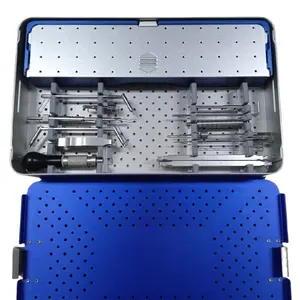

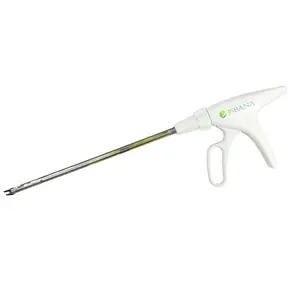

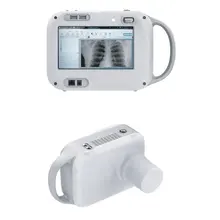





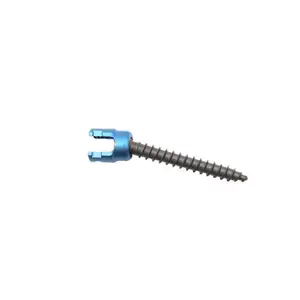


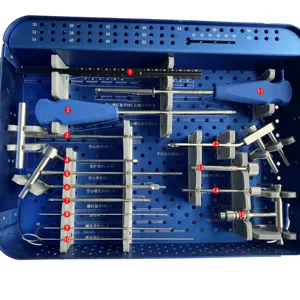
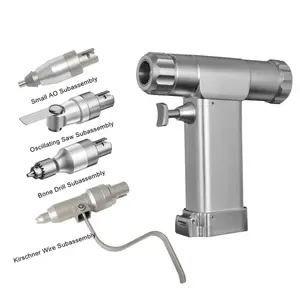














 浙公网安备 33010002000092号
浙公网安备 33010002000092号 浙B2-20120091-4
浙B2-20120091-4